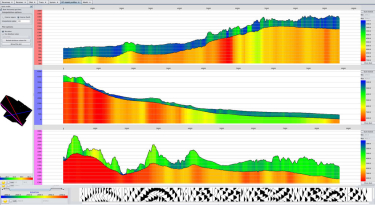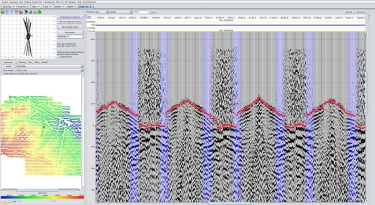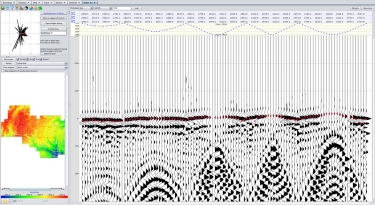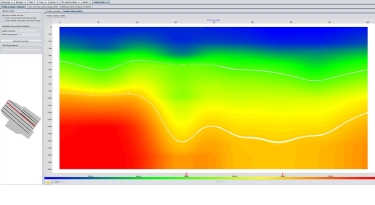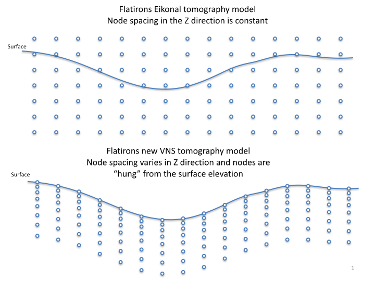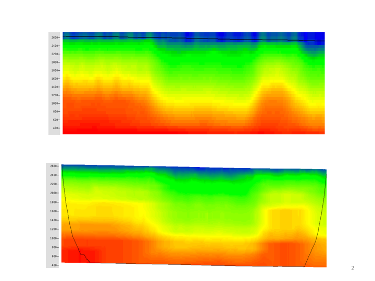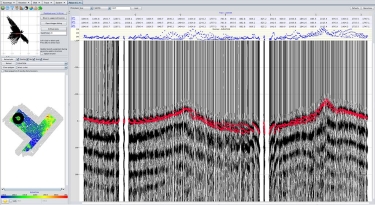Flatirons™ Software Products
Flatirons™ software sets the standard for front end seismic data processing. Assure data processing accuracy with our integrated products:
- Geometry QC
- First break picking
- Multiple methods for analyzing and modeling refraction statics
- Eikonal tomography
- Variable Node Spacing tomography
- Anisotropy refraction analysis
At XtremeGeo we understand the importance of correct geometry and a reliable model of the near surface for seismic data imaging. Our intuitive software tools help you easily identify errors and analyze difficult data to correct near-subsurface distortions.
Achieve results with our advanced software tools to increase the value of all subsequent (and expensive) seismic processing steps. The multi-dimensional applications accommodate 2D, 3D and 4D data types.
Flatirons™ software implements a unique high-performance technology designed for massive datasets. Algorithms deliver 10x to 100x faster throughput than competitive applications.
Geometry Quality Control
- Import geometry from industry standard formats with pre-configured templates or ASCII import.
- Evaluate the accuracy of the geometry with powerful visualization and statistical analysis tools.
- Correct geometry issues that can adversely affect later seismic data processing steps.
First Break Picking and Analysis
Powerful first break picking techniques streamline this time-consuming step in the workflow without sacrificing accuracy. Automatic first break picking algorithms work in conjunction with model solutions:
- Threshold-based picking
- Amplitude onset
- Pick predicting routine
Powerful manual first-break picking tools give the user complete control:
- Multi-pane displays useful for 2D surveys
- Common Offset / Shot / Receiver / CMP Displays
An innovative pick-less model-based approach solves difficult noisy data without manual picking.
How It Works:
- Set up parameters interactively and evaluate the accuracy of results instantly.
- Start the automatic process on the entire dataset once parameters are working well.
- Review statistically anomalous sections of the data volume with powerful, quick interactivity.
Statics Solutions – Refraction Methods
Flatirons™ offers multiple methods for solving near-surface modeling challenges. Each unique method has distinctive strengths to address data variability and near surface characteristics. Solve a wide range of near surface problems with a variety of approaches:
- Delay time layer-based model
- 3D Eikonal tomography
- Variable Node Spacing (VNS) tomography
- 2D-specific algorithms
Each technique provides critical interactivity to help you you make essential interpretive decisions and optimize interpretive steps. Interactive tools assist with refractor selection, weathering velocity, refractor smoothing, and statics computation and datum selection. We’ve added visualization so you can compare solutions with corrected data in multiple perspective views.You review the statics solution to quickly understand and interpret results, moving through the seismic data workflow with confidence. Designed for 2D or 3D data, this quality control includes the ability to generate CMP-stacks along any user-defined profile pulled from a 3D volume.
Eikonal Tomography
Flatirons’™ tomography technique is the most recent innovation in refraction solutions. With a powerful node-based modeling approach, the Eikonal solution delivers quick run time and accurate results.
VNS Tomography
Flatirons™ features our proprietary Variable Node Spacing (VNS) tomography, a vast improvement over existing eikonal tomography methods. VNS allows the user to use a vertically variable node spacing in order to get an increasingly finer resolution as one gets closer to the surface. We find that this is combines the benefits of finer resolution in the very near surface where velocities have much greater variance, while saving memory lower down in the model, where the velocity contrast is far less sharp.
Anisotropy Refractor Analysis
Flatirons™ uses a model-free approach to correct anisotropy regardless of origin. Whether the sine wave behavior is caused by anisotropy in refractor velocity, the layers above the refractor, by near surface geology, or a combination, the Flatirons™ technique removes the effects, insuring that subsequent processing steps are more accurate.
Exporting Results
A simple export feature easily incorporates Flatirons™ results into your seismic processing workflow. Accurate geometry and reliable near-surface estimation give you confidence that you’ve created a solid foundation to help guarantee the success of important subsequent data processing steps.

